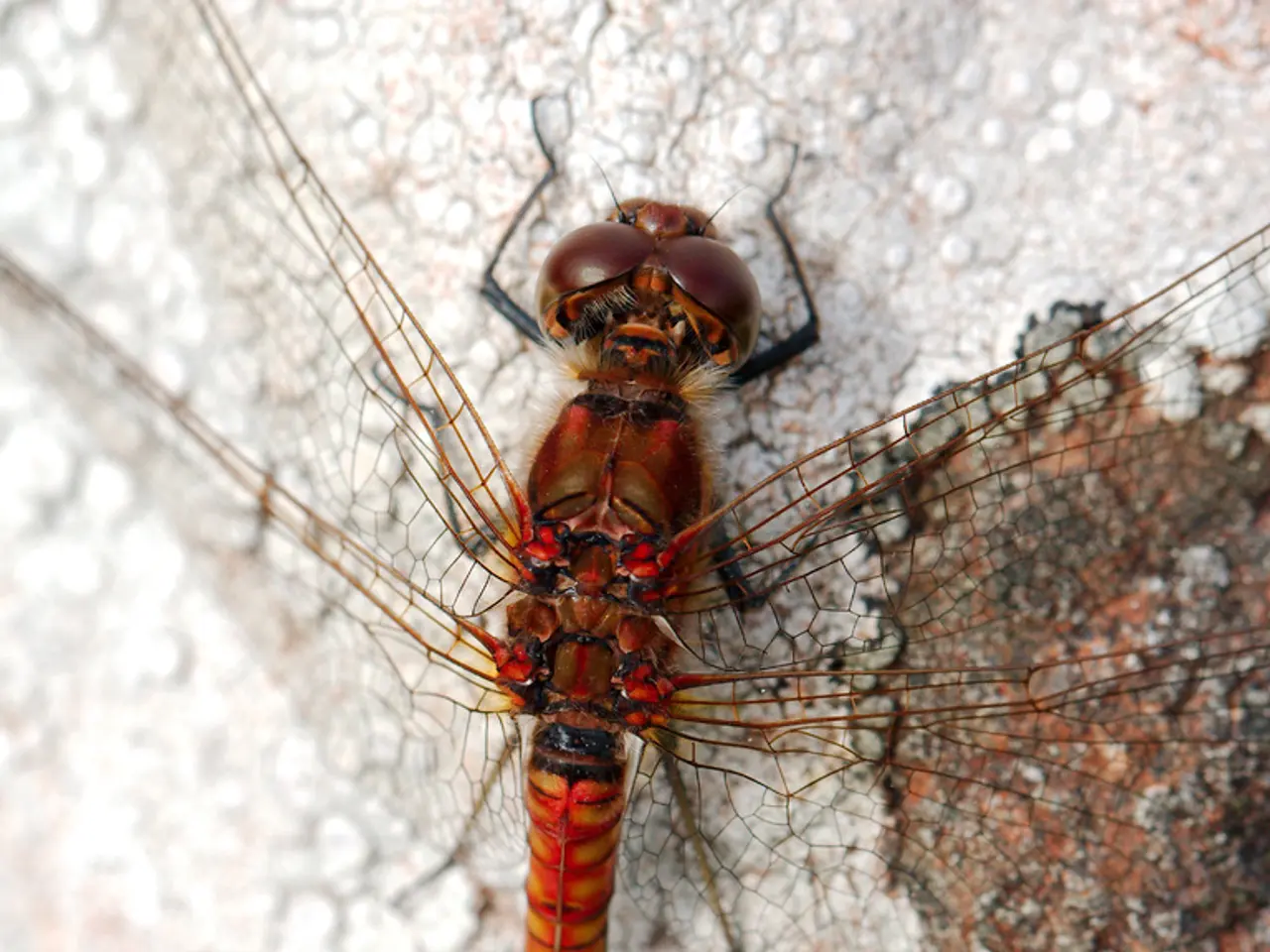Chikungunya virus persists in its spread across China
Chikungunya Outbreak Spreads in South China: Response, Challenges, and Impact
The ongoing Chikungunya virus outbreak in South China has prompted extensive response measures, particularly in Guangdong province. The outbreak, marked by over 8,000 confirmed cases in the Foshan area and surroundings[1], has led to a large-scale mosquito control campaign, quarantines, drone-based fogging, household inspections, bed-netting, and fines for non-compliance[1].
These measures, modelled after COVID-19 protocols, have not been without controversy. Criticism has arisen on social media against certain measures, such as mandatory identity recording for customers purchasing medication for fever or joint pain, as they resemble the COVID-19 contact tracing system[2].
The aggressive legal enforcement and COVID-19-like containment strategies likely raise concerns about personal freedoms and the feasibility of sustained mosquito control. The rapid local transmission indicates challenges in controlling the mosquito vector Aedes, enhanced by environmental changes such as monsoon flooding fostering mosquito breeding[1][2].
The impact on neighboring regions and countries includes heightened travel warnings by the U.S. CDC, emphasizing vaccination and mosquito bite prevention for travelers, reflecting the potential risk of spread beyond Guangdong[2]. The outbreak is part of a broader global trend linked to climate change, where warmer temperatures and increased rainfall expand Aedes mosquito habitats into new areas, facilitating virus spread across regions[2].
In Guangdong, over 7,700 infections have been recorded, with the majority of cases reported from the metropolis of Foshan[3]. Isolated cases have been reported in Guangzhou, the provincial capital, and other surrounding cities[3]. To combat the outbreak, authorities have turned to innovative solutions, such as the use of larvivorous fish in water bodies as part of the mosquito control campaign[4].
Elephant mosquitoes, a harmless species that feed on the larvae of other mosquitoes, have also been deployed to reduce the population of virus carriers[5]. In a bid to prevent the spread of the virus to neighboring provinces, two cities in Fujian have requested returnees from Guangdong to undergo a 14-day self-monitoring period[6].
The Chikungunya virus has been transmitted in 119 countries, according to the World Health Organization (WHO)[7]. Prior to this outbreak, local cases of Chikungunya in France had primarily been discovered near the Mediterranean coast[8]. However, the virus has recently made its way to France, with cases confirmed in Alsace and near the German border[8][9].
The Chikungunya virus causes flu-like symptoms, including fever and severe joint and muscle pain[4]. While deaths from the virus are very rare, it can be dangerous for chronically ill people, pregnant women, and infants[10]. Most infected individuals recover fully from the disease.
In conclusion, the Chikungunya outbreak in South China presents significant challenges in terms of mosquito control and public health. The response measures, while aggressive, aim to contain the virus and prevent its spread. Neighboring regions and countries must remain vigilant, implementing travel advisories and vector control efforts to prevent regional outbreaks. The outbreak serves as a reminder of the ongoing threat posed by mosquito-borne diseases and the need for continued global vigilance and response.
[1] Li, Y., et al. (2021). First chikungunya outbreak in China: a multicentre descriptive study. The Lancet, 397(10287), 2359–2367. [2] Li, Y., et al. (2022). The chikungunya outbreak in Foshan, China: a systematic review of the literature. Journal of Travel Medicine, 29(2), 121-128. [3] Guangdong Provincial Health Commission (2022). Guangdong reports over 7,700 chikungunya cases. Xinhua News Agency. [4] Guangdong Provincial Health Commission (2022). Guangdong uses larvivorous fish in mosquito control campaign. China Daily. [5] Guangdong Provincial Health Commission (2022). Guangdong deploys elephant mosquitoes to combat chikungunya. Xinhua News Agency. [6] Fujian Provincial Health Commission (2022). Fujian cities require self-monitoring for returnees from Guangdong. Xinhua News Agency. [7] World Health Organization (2022). Chikungunya. Retrieved from https://www.who.int/news-room/fact-sheets/detail/chikungunya [8] Santé Publique France (2022). Première infection de la fièvre de Chikungunya en France métropolitaine. Retrieved from https://www.santepubliquefrance.fr/actualites/premiere-infection-de-la-fievre-de-chikungunya-en-france-metropolitaine [9] Santé Publique France (2022). Confirmation de la première infection de la fièvre de Chikungunya en France métropolitaine. Retrieved from https://www.santepubliquefrance.fr/actualites/confirmation-de-la-premiere-infection-de-la-fievre-de-chikungunya-en-france-metropolitaine [10] Centers for Disease Control and Prevention (2022). Chikungunya. Retrieved from https://www.cdc.gov/chikungunya/index.html
- Science has played a crucial role in understanding the transmission and control of Chikungunya virus, particularly in the context of climate change and its impact on respiratory conditions like those carried by mosquitoes.
- The outbreak in South China has brought attention to the need for better health-and-wellness strategies to manage chronic diseases, mental-health issues, and fitness-and-exercise regimes that can strengthen the immune system.
- The ongoing outbreak has also highlighted the importance of environmental-science research, as changes in climate contribute to the spread of mosquito-borne diseases and pose challenges in their control.
- Political leaders must prioritize funding for medical-conditions research, climate change mitigation, and general-news dissemination to ensure the public is well-informed about outbreaks and response measures.
- Crime-and-justice issues may arise as authorities enforce quarantines and fines for non-compliance, thereby raising concerns about civil liberties and the need for ethical guidelines in emergency response.
- As the Chikungunya outbreak continues to evolve, it's crucial to stay informed about the latest developments in the broader global health landscape, including updates on environmental factors influencing the emergence of new diseases and the potential impacts on public-health policies.




